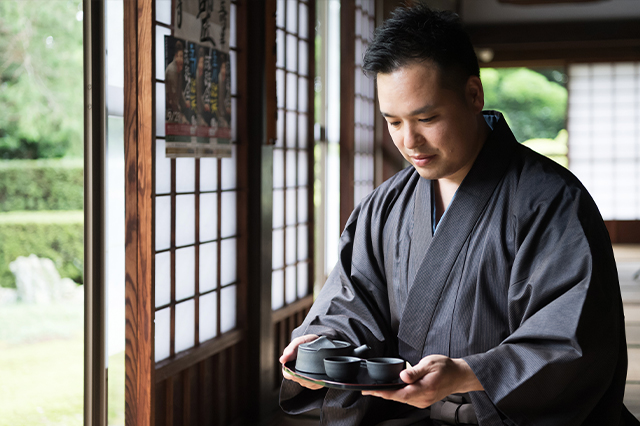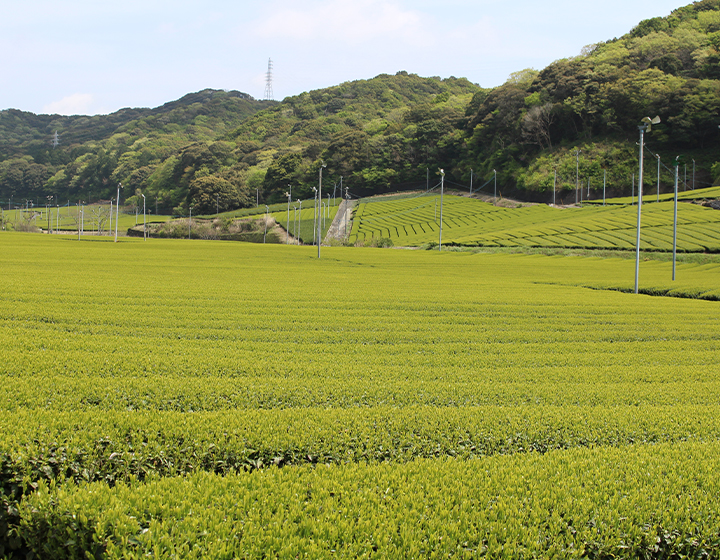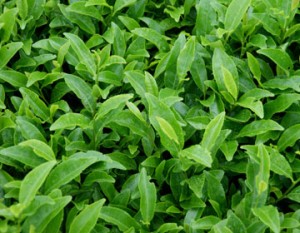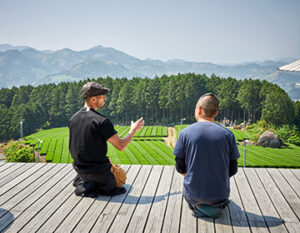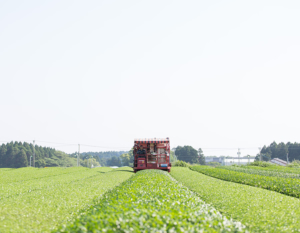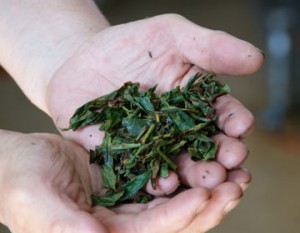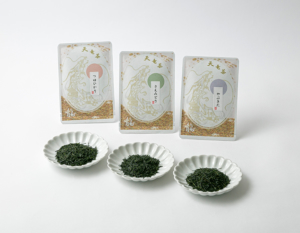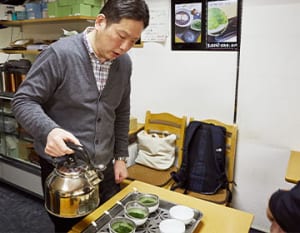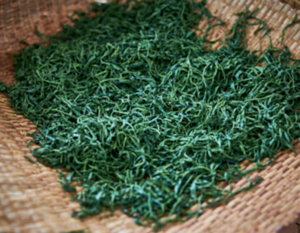He has a unique background, and he jumped into the world of tea.
Giving up his career as a high school teacher to become a web journalist, then entering the world of tea to carry on his wife’s family business.
“My wife and I were classmates in junior high, and we both grew up surrounded by tea farms. And yet I really only drank green tea in bottles (laugh). I was so surprised when I drank a cup of green tea that my wife prepared. It made me think that more people should have that experience. Since I didn’t have enough knowledge or experience to run a tea farm, I studied at Shizuoka Norin University before joining the business.” (Kosuke Anma, CEO of Anma Seicha)

One of the oldest tea-growing region
Many picture the vast tea farms when they think of Shizuoka prefecture. Anma Seicha is located in Fukuroi which is located in the southwest region. It is an area made up of flatlands formed by Ota River and surrounded on the southeast and northeast by mountains. Known for the melons that are produced in the area, the region has produced tea since before the WWII and is known as one of the oldest tea growing areas in Shizuoka. Anma Seicha was established by its founder in 1948, and Kosuke is the third generation. While small in scale, it is a well-established tea grower with 70 years of history that handles all stages of the process including sales. The tea farm spreads out in front of the residence, and the factory is also located on the property. The pleasant aroma of tea tickles your nose each time you take a breath.
“Would you like to try picking tea?” Nakata hops onto the tractor at the suggestion.
“It’s so refreshing up here, overlooking the tea farm.” (Nakata) Taking a break to enjoy tea after picking, the gentle flavor seeps into the body.

Tea with a deep flavor and light sweetness
Anma Seicha has won numerous awards in tea competitions, and produces the standard green tea as well as “hakuyocha” which is grown without sunlight with a covering for 99.99% during growth. The tea leaves become white, leading to an amino acid content that is 3 times of the standard tea and 2 times that of “gyokuro” known as the one of the most premium of teas. It also has very little catechin, reducing much of the bitterness associated with green tea, bringing out the deep flavor and light sweetness. Very few growers make “hakuyocha” because it is labor intensive, making it very rare. Kosuke has been recognized by the Ministry of Agriculture, Forestry and Fisheries for his research of “hakuyocha”.
“I’m sure there are many young people who have grown up not knowing the true flavor of Japanese green tea. I feel I have a duty to come up ways to communicate the appeal of green tea to this generation.” (Mr. Anma)

The endless pursuit of delicious tea
Kosuke has taken on many challenges including being creative with the packaging and developing a unique tea pot. Working with a local “kawara” roof tile company “Kawara-iki”, he developed a traditional tea pot made of “kawara” material which reduces the bitterness and greatly increases the flavor and sweetness of green tea called “suigetsu”. True to the concept of “offering new value that is also practical”, Kosuke continues to take on new challenges to be able to pass on the tradition of tea to the future generation. His experience with different careers seems to be supporting his efforts.
